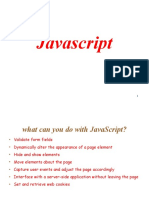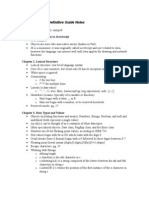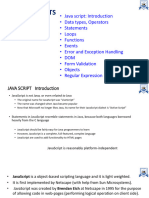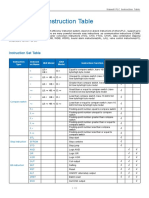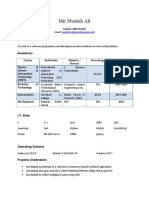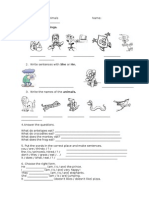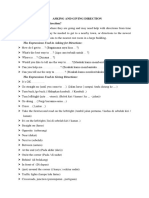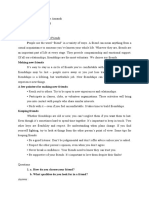0% found this document useful (0 votes)
36 views58 pagesLecture 3
This lecture provides an introduction to JavaScript, covering its history, standardization, and fundamental concepts such as variables, data types, control structures, functions, and object-oriented programming. It discusses the evolution of JavaScript through various ECMAScript versions and highlights key features like functions, inheritance, and JSON. The lecture also emphasizes the importance of JavaScript in web development and server-side scripting using Node.js.
Uploaded by
Caleb PhiriCopyright
© © All Rights Reserved
We take content rights seriously. If you suspect this is your content, claim it here.
Available Formats
Download as PDF, TXT or read online on Scribd
0% found this document useful (0 votes)
36 views58 pagesLecture 3
This lecture provides an introduction to JavaScript, covering its history, standardization, and fundamental concepts such as variables, data types, control structures, functions, and object-oriented programming. It discusses the evolution of JavaScript through various ECMAScript versions and highlights key features like functions, inheritance, and JSON. The lecture also emphasizes the importance of JavaScript in web development and server-side scripting using Node.js.
Uploaded by
Caleb PhiriCopyright
© © All Rights Reserved
We take content rights seriously. If you suspect this is your content, claim it here.
Available Formats
Download as PDF, TXT or read online on Scribd
/ 58
























